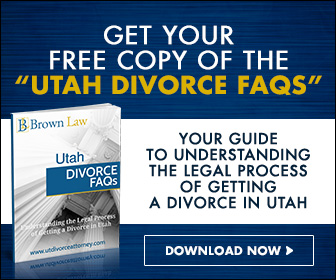In re K.T., C.T., Ka.T., and Ca.T., 2017 UT 44, A.K.A., Spanking Is not Necessarily Child Abuse
It’s not often you see the Utah Supreme Court take on a case in which a juvenile court found child abuse. The standard is pretty low for child abuse (scary low, in fact), so the Supreme Court seems to naturally assume abuse happened. That and you do get the Utah Appellate Court reviewing juvenile court findings of abuse, so the Appellate Court acts as a filter for the Supreme Court on these cases.
Every so often, though, there’s a case with some pretty big implications that the Supreme Court wants a crack at it — usually to fix a mistake.
In re K.T., C.T., Ka.T., and Ca.T (“in re” essentially means “in regard to” or “regarding”) is one of those cases where the Supreme Court decided to fix a mistake.
These are the quick facts of the case:
1. Division of Child and Family Services (DCFS) suspects child abuse, investigates, and files a petition alleging abuse against a family.
2. After an initial shelter hearing, the juvenile court took away the family’s children and placed them in DCFS custody.
3. The family and DCFS talk and agree on facts about what happened.
4. Among those facts, the family agreed to this: ““[K.T.] also disclosed [Mother] has spanked and disciplined her and her siblings with a belt. The mother uses a black belt with rhinestones. [Father] has spanked the children with a belt historically.”
5. There were no facts about spanking injuring the children, leaving bruises, or anything else.
6. Based on the facts the family and DCFS agreed to, the juvenile court judge said this:
1. Hitting a child with a belt or strap or another object is abuse.
2. The pain caused by the striking is non-accidental harm.
3. The court cannot envision a scenario where striking or hitting a child, of any age, would be appropriate or reasonable discipline.
4. The court can envision a parent, as a child, being hit with a belt or strap as discipline at that time, in that day and age, many years ago that type of discipline was deemed appropriate and perfectly reasonable.
5. As a society we’ve progressed to the point where it’s not acceptable to strike a child and certainly to strike a child, of any age, with an object, a belt, a strap, or a paddle or anything of that nature.
6. We’ve evolved beyond it being appropriate to strike a child with an object.
7. The simple striking of the child with a belt caused pain and is abuse.
Essentially, the judge created a blanket rule that criminalized hitting or striking children with a belt, strap, or any other object.
(I say criminalized, but that’s not quite accurate. This was not a criminal proceeding; it is a civil proceeding. In any case, the judge said something akin to, “If you spank your kids with a belt or anything else, your kids will be taken away and put in State custody indefinitely.”)
Here are a couple examples of what would be child abuse under the juvenile court’s black-and-white rule. Swat your kid’s hand with a magazine for taking cookies off the counter: child abuse. Use a belt on your kid’s bum just once because that child hit a sibling in the case: child abuse and your kids could be taken away.
What’s even more disturbing is the juvenile court’s blanket rule allows the court to infer harm if there is any hitting, not just hitting that takes place during discipline. This means if you have a pillow fight with your child and hit him with a pillow, that could be abuse.
You can easily see the serious problems with this rule, and so could the Utah Supreme Court.
Ultimately, the Court reversed the finding of child abuse.
As a Utah divorce attorney, I’m interested in this case because when people get divorced, they start making all sorts of allegation against their soon-to-be ex. One of the more popular allegations is child abuse for fairly normal discipline, like spanking.
What I mean is families will have spanked their kids occasionally as discipline, but when divorce starts, one spouse will say that spanking was in itself child abuse so the other spouse should not have parent-time with the children. (Never mind that the spouse making the accusation spanked as well.)
Now we have something from the Utah Supreme Court clarifying that spanking, even with a belt, is not necessarily child abuse.
Here is the opinion in full for you to read.
IN THE SUPREME COURT OF THE STATE OF UTAH STATE OF UTAH, In the interest of K.T., C.T., Ka.T., and Ca.T., children under eighteen years of age. B.T. and S.T., Appellants, v. STATE OF UTAH, Appellee. Nos. 20160410, 20160386 Filed August 8, 2017 On Certification from the Court of Appeals Third District Juvenile, Salt Lake The Honorable Charles D. Behrens Nos. 1125972, 1125975, 11255977, 1125980 Attorneys: Sheleigh A. Harding, Salt Lake City, for appellant B.T. Jordan Putnam, Cottonwood Heights, for appellant S.T. Sean D. Reyes, Att’y Gen., Carol L.C. Verdoia, John M. Peterson, Asst. Att’y Gens., Salt Lake City, for appellee Martha Pierce, Salt Lake City, for Office of Guardian ad Litem JUSTICE PEARCE authored the opinion of the Court, in which CHIEF JUSTICE DURRANT, ASSOCIATE CHIEF JUSTICE LEE, JUSTICE DURHAM, and JUSTICE HIMONAS joined. JUSTICE PEARCE, opinion of the Court: In the Interest of K.T., et al.
Opinion of the Court
INTRODUCTION
¶1 At the disposition hearing in their child welfare case, appellant parents stipulated to a set of facts, including a statement that one of the family’s children had “disclosed that [the mother] has spanked and disciplined her and her siblings with a belt.” Appellants also stipulated that the same child had disclosed that the father “has spanked the children with a belt historically.” The parents contend that this was an insufficient factual basis to permit the juvenile court to conclude that they had harmed the children within the meaning of the Utah Code. We agree that the juvenile court needed additional evidence before it could conclude by clear and convincing evidence that the children had been harmed. We reverse.
BACKGROUND
¶2 This case involves four children—K.T., C.T., Ka.T., and Ca.T. Appellant S.T. (Mother) is the mother of all four children. Appellant B.T. (Father) is the biological father of the younger two—Ka.T. and Ca.T. Father is the stepfather of the oldest two—K.T. and C.T.
¶3 The State filed a Verified Petition in February 2016 seeking to adjudicate the children as abused and neglected under Utah Code section 78A-6-105 (2008).1 Following a preliminary shelter hearing, the juvenile court placed K.T., C.T., Ka.T., and Ca.T. into the custody of the Division of Child and Family Services (DCFS).
1 This section of the Utah Code has since been amended. The parties cite, and we will therefore reference, the 2008 version of the code.
¶4 The parties stipulated to a number of findings of fact. One stipulated finding indicated that “[K.T.] also disclosed [Mother] has spanked and disciplined her and her siblings with a belt. The mother uses a black belt with rhinestones. [Father] has spanked the children with a belt historically.”2
2 Both Father and Mother responded to this fact under Utah Rule of Juvenile Procedure 34(e). All parties acknowledge that Mother and Father stipulated to this fact.
¶5 Based on the stipulated findings of fact, the judge concluded: 1. Hitting a child with a belt or strap or another object is abuse. 2. The pain caused by the striking is non-accidental harm. 3. The court cannot envision a scenario where striking or hitting a child, of any age, would be appropriate or reasonable discipline. 4. The court can envision a parent, as a child, being hit with a belt or strap as discipline at that time, in that day and age, many years ago that type of discipline was deemed appropriate and perfectly reasonable. 5. As a society we’ve progressed to the point where it’s not acceptable to strike a child and certainly to strike a child, of any age, with an object, a belt, a strap, or a paddle or anything of that nature. 6. We’ve evolved beyond it being appropriate to strike a child with an object. 7. The simple striking of the child with a belt caused pain and is abuse.
¶6 The juvenile court determined that Mother and Father (collectively Parents) abused the children under Utah Code section 78A-6-105.
¶7 Parents now appeal that conclusion. They contend that the stipulated facts do not support an abuse determination. More specifically, they argue that the juvenile court erred when it concluded that spanking a child with a belt, without any additional proof of harm, constitutes abuse within the meaning of Utah law.
STANDARD OF REVIEW
¶8 We review a juvenile court’s conclusions of law based upon stipulated facts for correctness. State ex rel. B.T., 2009 UT App 182, ¶ 5, 214 P.3d 881.
ANALYSIS
¶9 To find abuse under Utah law, a court must find harm. Utah Code section 78A-6-105(1)(a) defines “abuse,” in relevant part, as “nonaccidental harm of a child” or “threatened harm of a child.” And, in the 2008 version of the Code the parties cite, “harm” means, in relevant part, “physical, emotional, or developmental injury or damage.” Id. § 78A-6-105(19). ”If, at the adjudication hearing, the [juvenile] court finds, by clear and convincing evidence, that the allegations contained in the petition are true, it shall conduct a dispositional hearing.” Id. § 78A-6-311(1).3
3 The clear and convincing standard demands the introduction of evidence that makes “the existence of the disputed facts . . . very highly probable.” Lovett v. Cont’l Bank & Tr. Co., 286 P.2d 1065, 1067 (Utah 1955). Translated to the case before the juvenile court, the State needed to present evidence that would allow the court to conclude that it was “very highly probable” that the children had been harmed. Essential Botanical Farms, LC v. Kay, 2011 UT 71, ¶ 24, 270 P.3d 430 (citing Lovett, 286 P.2d at 1067).
¶10 Parents argue that the State failed to put evidence before the court that would allow it to conclude that the discipline Parents administered resulted in harm. “Simply put,” they argue, “there are no stipulated facts regarding ‘harm.’” Parents are correct. The State failed to introduce evidence that the parental discipline had harmed the children and left the court to speculate from the stipulated facts that the children had been harmed.
¶11 The juvenile court attempted to bridge the evidentiary gap with the conclusion that “[a]s a society we’ve progressed to the point where it’s not acceptable to strike a child and certainly to strike a child, of any age, with an object, a belt, a strap, or a paddle, or anything of that nature.”4 Although not explicit in the juvenile court’s order, it appears from the argument’s transcript that the court may have relied on State ex rel. C.I. to reach that decision. 2009 UT App 141U (per curiam). In C.I., the “[m]other hit C.I. on his arms with a belt, and also hit C.I. near his eye.” Id. at *1. The record indicated that, as a result of the blows, C.I. suffered a “black eye and bruising.” Id. The mother argued that her actions did not constitute abuse because she “reasonably disciplined him.” Id. The court rejected the mother’s argument and found that “[s]triking a child with a belt does not constitute the use of reasonable discipline as it is an ‘unreasonably cruel punishment.’” Id. (citing State ex rel. L.P., 1999 UT App 157, ¶ 8, 981 P.2d 848). The court in C.I. affirmed the juvenile court’s order because its determination that C.I. had been abused was not contrary to “the clear weight of the evidence.” Id. The court of appeals’ seemingly definitive statement about striking a child with a belt may have given the juvenile court in this case comfort in announcing that “[h]itting a child with a belt or strap or another object is abuse.”
4 The juvenile court also reasoned that it could not “envision a scenario where striking or hitting a child, of any age, would be appropriate or reasonable discipline.” The parties did not argue, and we will not address, any reasonable discipline exception under Utah Code section 78A-6-105(1)(b)(i).
¶12 State ex rel. L.P., on which the per curiam C.I. relies, was not so definitive. Rather, L.P. listed a number of factors that a juvenile court should consider before determining whether a child has been abused within the meaning of the statute. 1999 UT App 157, ¶ 8. “Such factual findings may include, but are not limited to, the following: . . . evidence of any bruises, contusions, or abrasions on the child; . . .[and] evidence of unreasonably cruel punishment such as beatings with a belt . . . or other object.” Id. L.P. clarified that “[n]one of the factors listed above is necessarily dispositive . . . . Instead, these evidentiary factors should guide the juvenile court as it exercises its broad discretion in making [an abuse] determination.” Id.
¶13 Moreover, we do not interpret C.I. as imposing a rule that every use of any object to discipline a child constitutes per se abuse. Although the C.I. court stated that striking a child with a belt cannot be reasonable discipline, the court in C.I. did not rely solely on the mother’s use of a belt to conclude that C.I. had been harmed. Rather, just as it did in L.P., the court of appeals relied on additional findings that spoke to the harm C.I. had suffered. For example, the court noted C.I.’s black eye and bruising. C.I., 2009 UT App 141U at *1.
¶14 To be clear, in this case the State would not have needed to forward much additional evidence to allow the juvenile court to infer harm. Had there been evidence of the effects of the spanking— as in C.I.—the court may have been able to conclude that the children had been harmed. Or, if there had been additional evidence about the particular way that Mother “uses a black belt with rhinestones,” the juvenile court could have inferred the existence of harm. But without such information, the court was presented with two options: improperly speculate about what the spankings and discipline mother administered looked like, or rely on a per se rule that harm occurs any time a child is struck with any object. The juvenile court opted for the per se rule. In the Interest of K.T., et al.
¶15 The rule the juvenile court articulated—that “[h]itting a child with a belt or strap or another object is abuse”—is overbroad and alters the statutory meaning of “abuse.” See UTAH CODE § 78A-6- 105(1). The juvenile court’s per se rule expands the definition of “abuse” to capture the myriad ways a parent might “hit a child” with “another object” that would not actually harm the child. For instance, under the rule the juvenile court announced, a parent throwing a pillow or a rolled up pair of socks at a child would be considered per se abusive. Hitting a child with a Nerf sword playfully as part of a game would also meet the definition. And although those situations are different than those confronting the juvenile court in this case, the need to resort to a per se rule exposes the problem with the factual record before the juvenile court. Although we might speculate that Mother was doing more than spanking her children with the belt lightly so that it did not cause physical or emotional injury within the meaning of the statute, we don’t know that.5 And we don’t know that with the level of certainty needed to meet a clear and convincing evidentiary standard.
5 The statute defines harm as “physical, emotional, or developmental injury or damage.” UTAH CODE § 78A-6-105(19).
¶16 In other words, while use of an object to spank or discipline a child might provide persuasive evidence that the child experienced harm, that evidence may not be dispositive. As the court of appeals has noted, “there are a myriad of circumstances with countless permutations, which may or may not justify intervention of the juvenile court.” L.P., 1999 UT App 157, ¶ 7. Because of the many ways adults interact with children, juvenile courts need the flexibility to examine situations as a whole. And it is incumbent upon the State to present the evidence the juvenile courts need to accurately assess the situation. Failure to provide that evidence invites speculation and increases the potential for reaching an erroneous conclusion.
¶17 Parents stipulated that “[K.T.] also disclosed [Mother] has spanked and disciplined her and her siblings with a belt. The mother uses a black belt with rhinestones. [Father] has spanked the children with a belt historically.” We have before us no additional relevant facts demonstrating harm. The juvenile court made no findings that inform us whether the children experienced any “physical, emotional, or developmental injury or damage.” See UTAH CODE § 78A-6-105(19). It is unclear how hard Parents hit the children, whether the children suffered emotional or physical pain, and whether the children were injured. Without more, the juvenile court was forced to rely on a per se rule that has the potential to sweep non-abusive behavior into its net.
CONCLUSION
¶18 The juvenile court erred when it concluded that the stipulated facts supported an abuse determination. We reverse.










